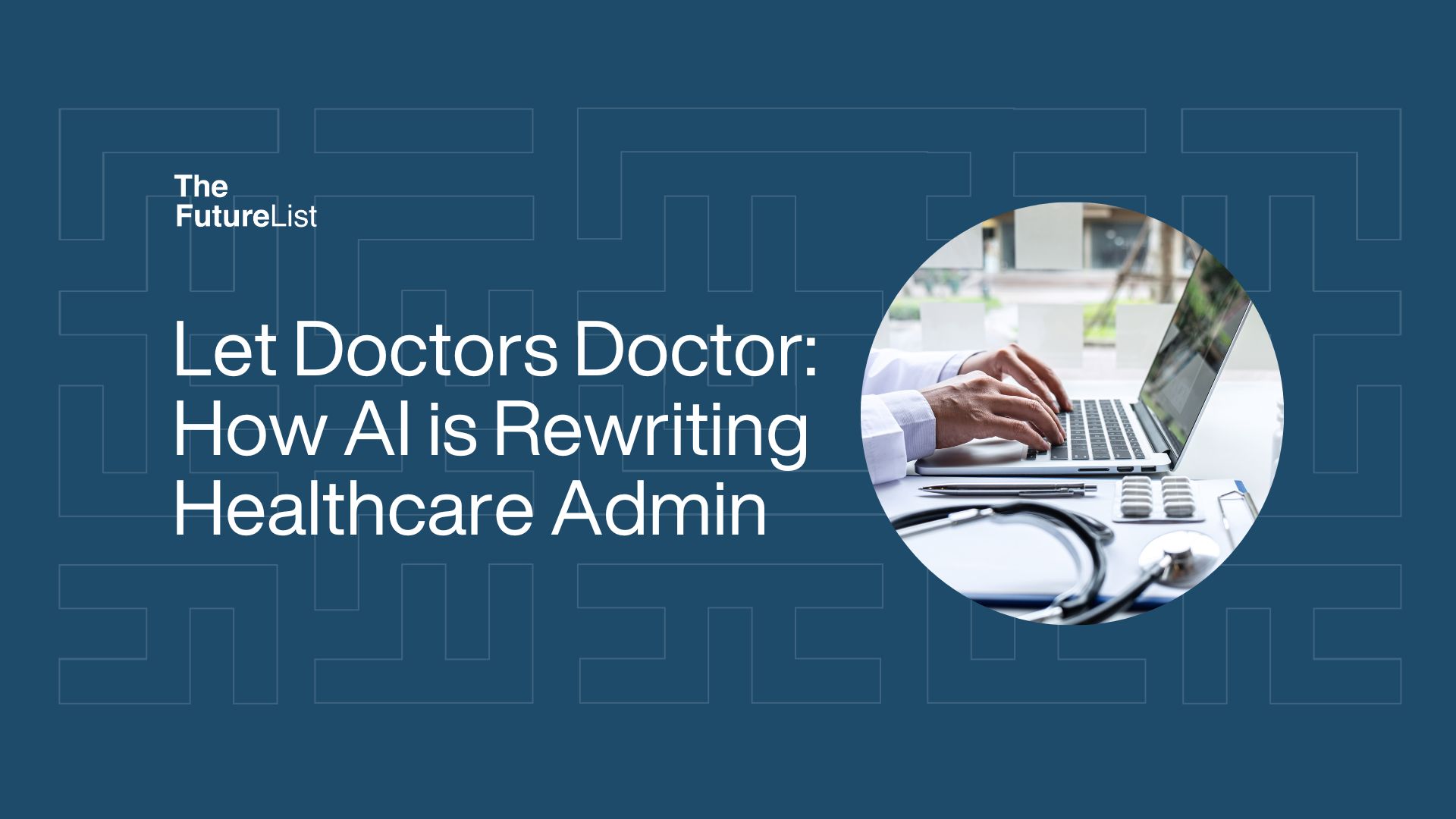
Let Doctors Doctor: How AI is Rewriting Healthcare Admin
By Eric Kamande
The silent crisis in healthcare isn’t just about staffing shortages or rising costs. It’s about the growing paperwork volume that continues pulling clinicians away from their patients. Doctors today spend nearly two hours on administrative work for every hour of direct patient care, a staggering imbalance reported across the U.S., EU, and other OECD countries. This isn’t just frustrating — it’s unsustainable.
In the UK, NHS staff regularly cite bureaucracy as a leading reason for leaving medicine. In Australia, general practitioners report spending up to 40% of their workweek completing forms and referrals. Behind these statistics lies a maze of systemic inefficiencies.
Prior authorizations frequently delay life-saving treatments; a 2024 OECD study revealed that patients in some European countries wait three times longer for approvals than their private-sector counterparts. Legacy systems continue to force doctors to manually re-enter patient data, resulting in staggering time losses — Japanese hospitals alone lose an estimated 18 million hours annually due to duplicated charting. Meanwhile, the complexity of medical billing has become a global drain, with healthcare systems spending approximately $500 billion each year navigating claims. That’s enough to fund the salaries of 10 million nurses.
Enter The Quiet Revolution
Rather than layering on more dashboards and screens, a new generation of startups is embedding intelligence directly into healthcare workflows, acting like invisible assistants that handle the repetitive administrative load behind the scenes.
Medical administration now spans everything from insurance approvals and risk coding to charting, compliance reporting, and reimbursement documentation. The shift toward value-based care models has only added to this burden. Interoperability challenges across hospitals and clinics further compound the issue, forcing clinicians to reconcile fragmented data manually. According to Health Affairs, administrative costs now account for 15 to 30% of healthcare spending in many countries, while Mayo Clinic research finds that over 60% of physicians report signs of burnout.
- Navina: The Digital Clinical Partner
Founded in 2018 by Ronen Lavi and Shay Perera, Navina is headquartered in New York, with R&D operations in Israel. The company has built an AI-powered platform that integrates directly into electronic health records to structure unorganized patient data into clear, actionable insights.
Now deployed in over 1,300 clinics, Navina helps clinicians save time on chart reviews and risk adjustment. At Northeast Medical Group, pilot deployments showed a 50% reduction in chart review time. Backed by a $55 million Series C round, the company is quickly gaining traction as a frontline solution to administrative bloat.
- Taxo: Revolutionizing Prior Authorizations
Taxo, founded in 2023 by Dr. Ahmed Kerwan and Hassan Tahir in San Francisco, is tackling one of the healthcare system’s biggest friction points: prior authorizations.
Its AI system understands clinical language and logic, enabling it to process insurance approvals with a level of nuance that rules-based systems can’t match. Early pilots have delivered 90% faster processing times, significantly easing the administrative burden on hospitals. Taxo recently raised $5 million in seed funding and is piloting its platform in two major California health systems.
- DeepScribe: The AI Medical Scribe
Based in San Francisco, DeepScribe was co-founded in 2017 by Akilesh Bapu and Matthew Ko. The company uses ambient AI technology that listens to doctor-patient conversations and automatically generates clinical notes, freeing up physicians from hours of typing and clicking.
The system has now processed over 10 million patient encounters, saving doctors an average of three hours per day. DeepScribe recently raised $30 million in Series A funding from Benchmark and has begun scaling partnerships with large health systems across the U.S.
The Road Ahead
While AI solutions like Navina, Taxo, and DeepScribe show significant promise, hurdles remain. Integration with legacy EHR systems can be complex, and many clinicians are rightly cautious about relying on opaque algorithms. Transparency, security, and user trust will be essential for widespread adoption.
Still, as global health systems face worsening staff shortages and rising administrative costs, intelligent automation is quickly shifting from optional innovation to critical infrastructure. The ultimate goal of these tools isn’t simply efficiency — it’s restoring time to clinicians, enabling them to focus on care rather than compliance.
If AI can take care of the paperwork, maybe doctors can finally take care of patients.
Get innovation insights from The FutureList weekly. Subscribe to our newsletter here
Categories
- Agritech
- Artificial Intelligence
- Biotech
- Blockchain
- Climate Tech
- Data Infrastructure
- Edtech
- Events
- Fashion
- Fintech
- Healthtech
- Infrastructure
- Innovation Memos
- Innovation Scout Program
- Insight
- Insurtech
- Machine Learning
- Martech
- Mobility
- Music and Media
- Partner Offers
- Perks
- Procurement
- Proptech
- Retailtech
- Ridehailing
- Ridesharing
- Robotics
- Space Aviation
- Supply Chain
- Talent
- Telecoms
- Uncategorized
- Venture Capital
- Wastetech
- Women In Tech
Recent Posts
- The Rural Health Operating System: Reinventing Access to Care in Africa
- Intelligent Grid Monitoring: How IoT and AI Are Powering the Future of Energy
- Innovation Memo with STEMAIDE: Hands-on STEM Education for Young Africans
- Transforming Health in Africa, One Project at a Time
- Smart People: A core pillar for Smart Cities